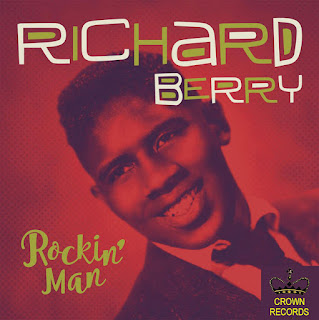Following the end of Boston's tour in 1979, lead guitarist, producer and principal songwriter Tom Scholz announced to the band that he was going to take a break for about a year, according to rhythm guitarist Barry Goudreau. Goudreau got together with bandmembers singer Brad Delp and drummer Sib Hashian and recorded a few tracks. According to Goudreau, they brought them to Scholz hoping he'd be interested in using them for a new Boston album. However, Scholz said he'd simply like to produce the record, and Goudreau felt that the record company wasn't going to allow Scholz to do anything other than a Boston album. So more music was recorded and eventually released as Goudreau's self-titled solo album.
To promote the album, the record company inferred in advertisements that Goudreau's guitar was the sound behind Boston, which infuriated Scholz. Reportedly, Scholz contacted the record company (CBS) and told them to either stop promoting the album or they'd never see another Boston album. Not only was the promotion of Goudreau's album discontinued, but soon after, Scholz fired Goudreau from the band.
Sometime in 1980, the remaining members of Boston recorded four tracks. But it wouldn't be long before other members, including Hashian and bassist Fran Sheehan, were kicked out of the band. This basically left only Scholz and Delp along with hired sidemen. Then Scholz broke a finger, there were various lawsuits, Boston signed with a different record company, etc. etc. Finally, Third Stage was released in 1986, more than eight years after the band's previous album Don't Look Back. By that time, music trends had changed dramatically and it was a case of too little, too late.
I wanted to see what could have been had Goudreau's tracks and Scholz's 1980 tracks been used on a new Boston album circa 1980/1981.
SIDE A
1. We're Ready
2. Dreams
3. Mean Woman Blues
4. Life is What We Make It
5. Amanda
SIDE B
1. The Launch
- Countdown
- Ignition
- Third Stage Separation
2. Cool The Engines
3. Hard Luck
4. What's a Fella to Do?
5. Shattered Images (Help Me) [live]
I used five tracks from Goudreau's album, all but one of which were co-written with Delp and all feature Delp on lead vocals and Hashian on drums. From Third Stage, I used the four tracks that were recorded in 1980, which all feature Delp and Hashian. And then I went about determining a track order.
First of all, I've always found "Amanda" to be an odd choice to lead off the album. It's a ballad and just doesn't seem to be the right way to kick off a Boston album. The second song, "We're Ready," seems tailor-made as the album opener and so that's what I went with here. Next, I used a song that was the single from Goudreau's solo album, "Dreams." Another track from Goudreau's album, "Mean Woman Blues," adds a bit of boogie to the mix and allows for some musical variety. One more Goudreau track, "Life is What We Make It," follows. Then we close out the first side of the album with the ballad "Amanda."
The second side opens with the three-part instrumental "The Launch," which then leads into "Cool the Engines." Two Goudreau tracks follow with "Hard Luck" and "What's a Fella to Do?"
I chose something not on either Third Stage or Barry Goudreau for the final track. Instead, I picked a track Boston played in concert often between 1976 and 1979, but never (as far as I know) recorded in the studio: "Shattered Images (Help Me)." There are quite a few recordings available from different shows, but I liked the one recorded at a show in Long Beach, Calif., in 1977. This track provides a big, enthusiastic ending for the album. You can find this version on a bootleg called Permission to Land, and it can also be found on YouTube.
Interestingly, at least for me, Hashian is the only person who performs on all the tracks.
I take no credit for the cover art. I found it being used for Boston songs on YouTube uploaded by ColdFrixion, and I thought it would make a nice alternative to the original cover and show that this is a different version.
Here's a YouTube Playlist of what the album could sound like.













